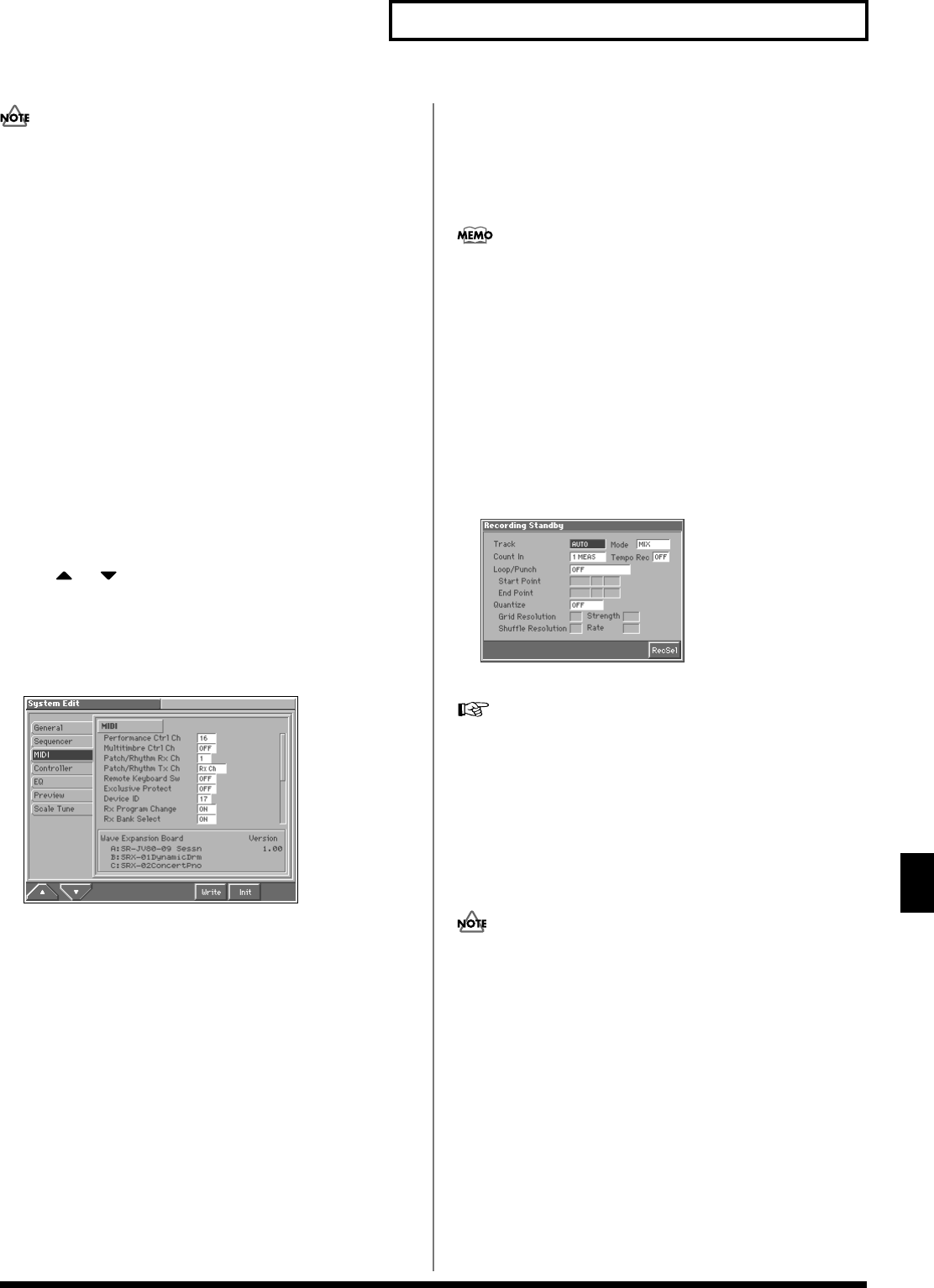
161
Playing a Phrase at the Touch of a Finger (RPS Function)
Playing a Phrase at the Touch of a Finger (RPS Function)
If you turn off the RPS function while a pattern is playing, the
keyboard will return to the normal playing state, but the pattern
will continue playing. If you want to stop playback of this
pattern, turn on the RPS function once again, and perform the
appropriate operation.
Performing with the RPS Function
from an External MIDI Keyboard
You can use the keys of an external MIDI keyboard to play patterns.
For example, you could refrain from assigning patterns to the keys of
the Fantom (E1–G7), but assign pattern to the remaining keys (note
numbers). This would let you use an external MIDI keyboard to
control pattern playback, and use the keyboard of the Fantom to
play normally.
1. Use a MIDI cable to connect the Fantom’s MIDI IN connector
to the MIDI OUT connector of your external MIDI keyboard.
2. Access the PLAY screen of the mode in which you want to
perform.
3. Press [MENU] to access the Menu window.
4. Use or to select “System Edit,” and then press [8
(Select)].
The System Edit screen appears.
5. Press [1 (▲)] or [2 (▼)] to select the “MIDI” tab.
A screen like the following appears.
fig.02-13_50
6. Use [CURSOR] to move the cursor to “Remote Keyboard
Sw,” and press [INC] to turn it “ON.”
7. Press [EXIT] to return to the PLAY screen.
With this setting, patterns can be played back from your external
MIDI keyboard.
8. Turn on the RPS function (p. 160).
9. Press keys on your external MIDI keyboard to play back
patterns.
Recording a Performance Using the
RPS Function
A performance that uses the RPS function can be recorded in real
time in the same way as a conventional performance. This provides
an easy way to remix patterns and create a song.
If you use the RPS function during realtime recording, the
pattern performance will be recorded just as it occurs.
1. Make sure that preparations for the RPS function have been
made correctly.
2. Access the PLAY screen for the mode in which you want to
perform.
3. Turn on the RPS function (p. 160).
4. Press [REC].
The [REC] indicator will blink, and the Recording Standby
window appears. In this window you can make various settings
for realtime recording.
fig.07-11_50
5. Specify how recording is to take place.
For details on these settings, refer to “Recording Your
Performance as You Play It (Realtime Recording)” (p. 129).
6. Press [STOP/PLAY].
The Recording Standby window will close, the [REC] indicator
will change from blinking to lit, and recording will begin.
7. Press a key to which a pattern is assigned.
The assigned patterns will be played back according to the keys
you press, and their performances will be recorded.
If the Count In parameter is set to “WAIT NOTE” in the
Recording Standby window, recording will not begin even if you
press a key that is assigned to a pattern, or a key that is assigned
as a Stop Trigger key.
8. When you are finished recording, press [STOP/PLAY].
The [REC] indicator will go dark.
